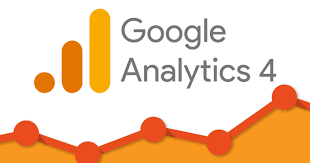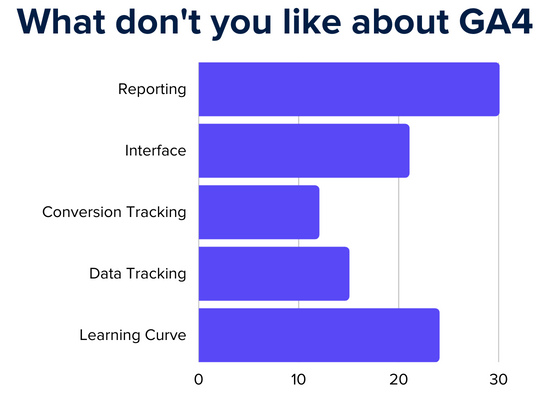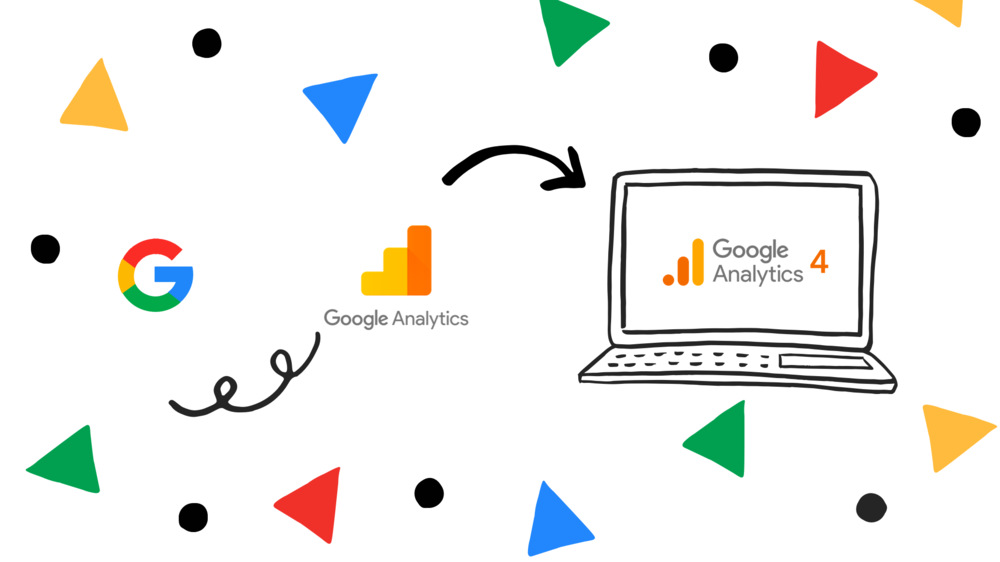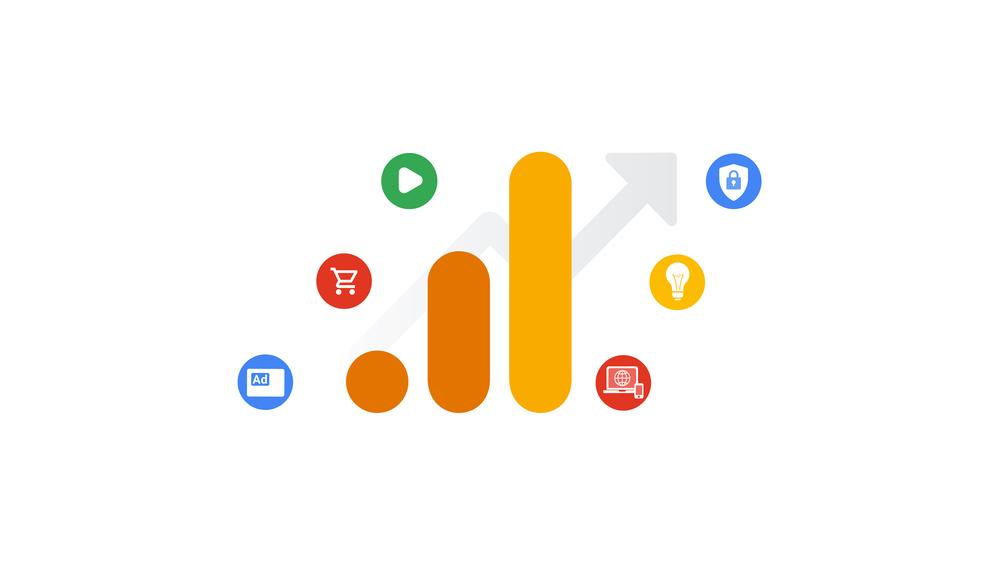Looking for the proper Google Analytics 4 guide?
If you are working on a website or doing SEO, you should be no strange to Google Analytics (GA). Nowadays, Google Analytics is one of the most popular web analytics platforms and has been contributing to real-statistics information & data-driven decisions for over 15 years. However, with the release of Google Analytics 4 (GA4), it’s a perfect time to update your data tool. In this article, we’ll walk you through everything you need to know about Google Analytics 4 – from the definition, key features, benefits/challenges, Google Analytics 4 Migration, and finally how to maximize your insights and data-driven decisions.
What is Google Analytics 4?
Google Analytics 4 is the latest version of Google Analytics – Google’s website analytics platform. It’s designed to provide businesses with a clear picture of their customer journey across multiple platforms, devices, & channels.

Unlike Universal Analytics – GA4’s predecessor, which focuses on tracking pages & sections, GA4 is event-focused. What does it mean? It means that Google Analytics 4 tracks user interactions (page clicks, video plays, and form submissions) instead of tracking pageviews. GA4 also introduces new machine learning capabilities and privacy features but we will talk about it later.
Key Features of Google Analytics 4
Here are the core features of GA4, you can have a look:
- Event-based Tracking: Google Analytics 4 is built around user interactions rather than page views. This allows you to track any action that users make on your site/app, even if it doesn’t involve loading a new page.
- Enhanced Data Control: GA4 allows you to gain more control over your data and privacy settings. You can automatically delete user data after a certain period, limit the collection of sensitive data, and even disable tracking altogether for certain users.
- Smooth Cross-device Tracking: With GA4, you can track user interactions across multiple platforms and devices including PCs, laptops, tablets, smartphones, and even offline. This allows you to acquire a better picture of your customers’ journey and behavior.
- Machine Learning Insights: GA4 leverages Google’s learning capabilities to provide you with deeper insights and predictive analytics. You can use the insights to optimize your marketing campaigns, improve user experiences, and deliver better results.
- Better ROI and Performance: Using GA4 to gain deeper insights into users’ behaviors and preferences, you can optimize your marketing campaigns and improve user experiences, resulting in better ROI and performance.
What Are the Limitations and Challenges of Google Analytics 4?

While GA4 offers many benefits, there are also some limitations and challenges that we shoud be aware of:
- Learning Curve: Google Analytics 4 is a new platform, and the learning curve involved in getting up to speed with its new features and capabilities might be difficult for you.
- Limited Integrations: Currently, GA4 has limited integrations with other platforms and widgets, which may be difficult to use in conjunction with your existing marketing stack.
- Limited Historical Data: If you’re migrating from Universal Analytics to GA4,you may experience some limitations in terms of historical data. GA4 only starts collecting data from the date you set it up so you won’t be able to access any data before that moment.
- Data Sampling: Depending on the volume of data you’re collecting, GA4 may use data sampling to process your data. This can sometimes result in less accurate insights or longer processing times.
Why Do You Need to Move to Google Analytics 4?

If you’re still working on Universal Analytics, then it’s time to start thinking about migrating to GA4 due to some reasons:
- Better Data Insights: GA4’s event-based tracking and machine learning capabilities give you much more comprehensive and accurate data insights. You can track user interactions beyond pageviews, such as button clicks and video plays, and get deeper insights into user behavior and preferences.
- Improved Privacy and Security: With GA4, you have greater control over your data privacy and security settings. You can choose to limit data collection, delete user data automatically, and even disable tracking for certain users.
- Future-proofing Your Analytics: By the July of 2023, Universal Analytics will be replaced by Google Analytics 4 entirely. By migrating to GA4 now, you can update your analytics and ensure that you can cna prepare for any changes or updates down the line.
Differences between Google Analytics 4 and Universal Analytics
While GA4 builds on many of the features and capabilities of Universal Analytics, there are also some key differences to be aware of:
- Event-based Tracking vs Session-based Tracking: As has been mentioned, GA4 is event-based which means it tracks user interactions rather than sessions and pageviews. This allows you to acquire more comprehensive and accurate data insights.
- User-centric Reporting vs Session-centric Reporting: GA4 takes a user-centric approach to reporting, focusing on individual users rather than sessions. This allows you to get a better understanding of individual user behavior and preferences.
- Enhanced Machine Learning Capabilities: GA4 leverages Google’s machine learning capabilities to provide deeper insights and predictive analytics. This includes features such as automatic anomaly detection and predictive metrics.
- Deeper Integration with Google Ads: GA4 offers deeper integration with Google Ads, allowing you to create audiences based on specific user behaviors and preferences. This can help to optimize your ad targeting and improve ROI.
Steps to Migrate from Universal Analytics to Google Analytics 4

If you’re ready to make the move to GA4, here are the steps you’ll need to follow:
- Set up a new GA4 property: First, you’ll need to set up a new GA4 property in your Google Analytics account. This will allow you to collect data using the GA4 tracking code.
- Install the GA4 tracking code: Once you’ve created your GA4 property, you’ll need to install the GA4 tracking code on your website or app. You can use Google Tag Manager or a similar tool to do this.
- Configure your data streams: Next, you’ll need to configure your data streams to ensure that your data is being collected and processed correctly. This includes setting up data sources for your website and/or app, as well as any other data streams you want to track (such as offline sales data).
- Migrate your existing Universal Analytics data: If you want to keep your historical data, you can migrate it from Universal Analytics to GA4 using the Data Import feature in Google Analytics. This will let you combine your old data with new data collected in GA4.
- Update your marketing tags and campaigns: Finally, you’ll need to update your marketing tags and campaigns for the new GA4 tracking code. This includes updating any Google Ads or Facebook Ads campaigns, as well as any custom events or goals you’ve set up.
How to Set Up a Google Analytics 4 Property
If you’re new to GA4, here’s how you can set up a new property:
- Create a new Google Analytics account: If you don’t already have a Google Analytics account, you’ll need to create one. Go to Google Analytics and follow the prompts to create an account.
- Create a new GA4 property: Once you’re logged in to your Google Analytics account, click on “Admin” in the bottom left-hand corner. Then, click on “Create Property” and select “Google Analytics 4”.
- Enter your property details: Give your new property a name and select the time zone and currency you want to use. You can also choose whether to enable enhanced measurement, which allows you to collect additional data such as scroll tracking and file downloads.
- Set up your data streams: Next, you’ll need to set up your data streams for your website and/or app. Click on “Data Streams” in the left-hand menu and follow the prompts to create a new stream.
- Configure your data settings: Finally, you’ll need to configure your data settings to ensure that your data is being collected and processed correctly. This includes setting up data sources for your website and/or app, as well as any other data streams you want to track (such as offline sales data).
Maximizing Your Insights and Data-Driven Decisions with Google Analytics 4
Now that you’ve migrated to GA4 and set up your property, it’s time to start maximizing your insights and making data-driven decisions. Here are some key metrics and KPIs to track.

- Event Tracking Metrics: In GA4, event is the primary way of tracking user interactions. You can track a wide range of events, including clicks, form submissions, and video plays. Some key event tracking metrics to consider are total events, unique events, & event value.
- Conversions: Conversions are any action that you want users to take on your website or appthat contributes to your business goals, such as filling out a form or making a purchase. GA4 allows you to set up conversion tracking for specific events and measure the effectiveness of your marketing campaigns & user experience.
- Audiences: Google Analytics 4 offers enhanced audience targeting capabilities, allowing you to create audiences based on specific user behaviors and preferences.
- Engagement Metrics: GA4 also offers a range of engagement metrics, such as session duration and bounce rate, that can help you understand how users are interacting with your website or app. By optimizing these metrics, you can improve user experiences and drive better ROI.
Key Metrics and KPIs to Track in Google Analytics 4 for Better ROI and Performance
To help you get started with tracking key metrics and KPIs in GA4, we bring out some key metrics below.
- Conversion Rate: This metric measures the percentage of users who complete a specific action, such as making a purchase or filling out a form. By tracking your conversion rate, you can identify areas for improvement in your user experience and marketing campaigns. Some related KPIs include Conversion Value (this metric measures the total value of conversions, allowing you to calculate ROI) and Conversion Rate by Channel (This metric shows you which channels are driving the most conversions, allowing you to optimize your marketing spend).
- Bounce Rate: This metric measures the percentage of users who leave your website after viewing only one page. A high bounce rate can indicate issues with your user experience or content. Some related KPIs include Avg. Session Duration and Pages per Session.
- User Retention: This metric measures the percentage of users who return to your website or app over a specific period of time. By tracking user retention, you can identify areas for improvement in your user experience and loyalty programs. Some related KPIs include Churn Rate and User Lifetime Value.
Google Analytics 4: Conclusion
Google Analytics 4 is a powerful web analytics platform that offers a large range of benefits over its predecessor – Universal Analytics. By migrating to GA4 and setting it up precisely, you can gain deeper insights into user behaviors and preferences, optimize your marketing campaigns and user experiences, and future-proof your analytics. Whether you’re new to GA4 or looking to improve your existing strategy, this article should give you all the information you will ever need to get started.
Read more: How to Change Password in Your WordPress Site (2022)

